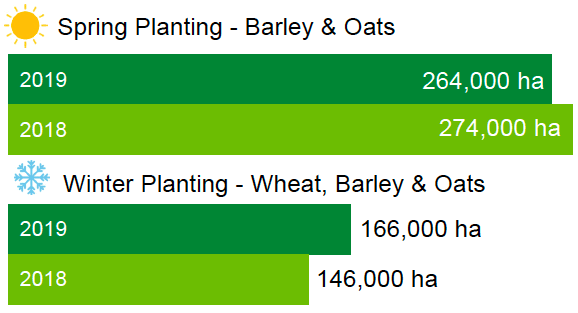Scottish Agricultural Census: June 2019
Statistics regarding the area of crops and other farmland, livestock, agriculture workforce and rented farmland.
An increase in winter planting was followed by a decrease in spring crops

The amount of winter crops grown increased in 2019. Barley, the largest cereal, rose one per cent over the past year to 290,900 hectares, due to a 30 per cent increase in the winter variety.
Wheat, which is predominantly a winter crop and the second biggest crop, also increased by nearly eight per cent on the previous year.
The larger areas of winter crops grown was helped by slightly lower than average rainfall when planting began in autumn 2018.
- Area used to grow cereals and oilseed rape 469,100 hectares
Factors such as crop-rotation, the use of fallow land and expected prices will influence farmers decisions on what crops to plant in the next season.
As with previous years when winter areas increase, the area of spring planted crops fell by three percent in 2019. While minimum temperatures were above average when planting started, the decrease is a predictable trend after an increase in winter planting.
The area of barley planted in 2019 is below the ten-year average.
Contact
Email: agric.stats@gov.scot
There is a problem
Thanks for your feedback